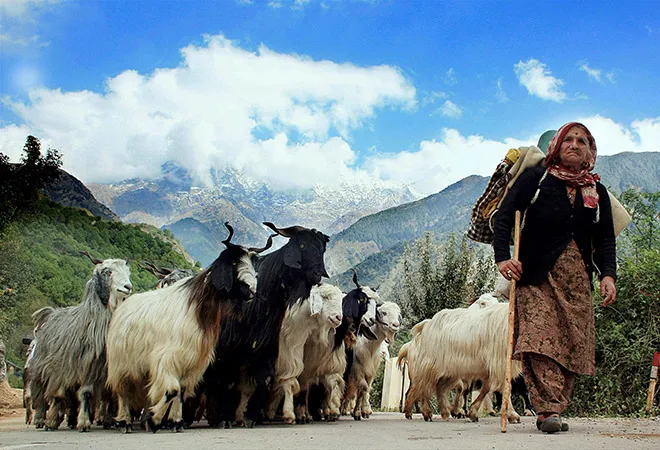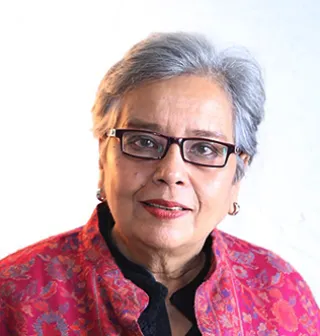-
CENTRES
Progammes & Centres
Location

Image Source: PTI
As the #MeToo movement gathers momentum in various sectors of the economy, one must not forget that the campaign is absent in India’s villages. It is the educated and more empowered women from the middle and upper middle classes who have had the guts to name the perpetrators of sexual harassment at work. Thousands of rural women and those living in small towns, on the other hand, are experiencing sexual harassment on a daily basis. Their lives are embedded in the long standing misogyny and deep rooted patriarchy that exists in India today. And since their education level is low, they have come to believe that these sexual abuses and harassments are normal. In some States like Haryana, women are still killed over dowry and female foeticide continues in some parts of the country. Girls are also killed in the name of family honour and the sex ratio is so skewed that men have to look for brides from other States.
After all it was a poor rural woman Banwari Devi from the potter caste who is responsible for the Supreme Court ruling against sexual harassment in workplace. She had objected to child marriage while working in a government department in rural Rajasthan. For her audacity in challenging an age old tradition, she was gang raped by feudal landlords. Her case was taken up by women’s rights group Vishakha and in 1997, the Supreme Court passed the landmark judgement.
Unfortunately, rural women are brought up thinking they are inferior to men and after marriage men will beat them and abuse them. The sex discrimination begins early in life and mothers and women in the family endorse patriarchy and clearly show their preference of sons over girls. Sadly, according to the latest National Health and Family Survey, 54.4 per cent of rural women believe that domestic abuse and violence is normal while only 46.8 per cent of urban women believed it.
As narrated by some women from small towns in recent media reports, you cannot work without sexual harassment because employers expect favours from women in return for giving them a job. Women working in small government offices in districts are also harassed by clerks and officers on a regular basis. Most women in mofussil towns give up jobs when they encounter sexual harassment from employers. Only those in dire straits put up with such harassment as they have no other alternative sources of income. Many rural women pull out of the work force also because of harassment in public transport. They are afraid of encountering the perpetrators or challenging them in courts.
Few in rural areas and small towns go to the police because they perceive a trust deficit within the policing and judicial system. Most avoid going to police because they are considered insensitive and the process involves a lot of time and resources and in the end it damages the reputation of the girl or woman which is very important in villages and small towns. Girls are encouraged to keep their grievances under wraps and not to speak even to their close relatives. They remain repressed and mentally disturbed for life because much of the sexual abuse in villages is by relatives (27% of all sexual abuse and harassment) something difficult for women to handle and seek help.
With education women become a little bolder. Without schooling, 16 per cent women reported physical violence at home or work and 38 per cent with schooling. In the construction sector, 78 per cent of the victims do not report sexual harassment.
But the truth is that half of India’s population comprises women but they contribute only 17.1 percent to the GDP. Their economic contribution is less than half of the global average. In China, women contribute 40 per cent to the GDP. According to the World Bank, if 50 per cent women joined the workforce, India could boost its growth by 1.5 per cent to 9 per cent. But if women are abused and persecuted, specially in the small towns and villages, they will not participate in the labour force. According to a study by McKinsey Global Institute, India could increase its GDP by 60 per cent or $2.9 trillion by 2025 if more women participated in the labour force. Women’s participation in labour force has been falling and has decreased from 34.4 per cent in 1990 to 27 per cent in 2016. It is not a feather in the cap of the government because despite increasing education rate for women across India, women are exiting work force by the thousands. According to a World Bank report, PM Modi promised social progression for all and promoted more women centric welfare programmes but despite the reforms, he has failed to empower women to enter the work force which is important for achieving a robust economy.
Because women are dropping out of the workforce, India’s unemployment rate is going up. According to CMIE, women left the work force during demonetisation but failed to return to work later. They mostly worked in the informal sector like housemaids, casual farm workers or construction workers. They may have had less incentive to return because of frequent sexual harassment. Innumerable stories about the abuse of housemaids appear in national dailies. The maids are mostly migrant workers coming from poorer States like Jharkand or Madhya Pradesh to metropolitan cities in India. After encountering sexual harassment, they return home and never come back.
Considering the hype about high economic growth and being the fastest growing nation in the world, isn’t it rather shameful that according to a global perception poll by Thomson Reuters recently, India is considered the least safe place in the world for women -- with the worst record for sexual violence, harassment from cultural and traditional practices and human trafficking? Ensuring safety of women at work, in public transport and public spaces in rural and urban areas should be the top priority of the government.
The views expressed above belong to the author(s). ORF research and analyses now available on Telegram! Click here to access our curated content — blogs, longforms and interviews.

Jayshree Sengupta was a Senior Fellow (Associate) with ORF's Economy and Growth Programme. Her work focuses on the Indian economy and development, regional cooperation related ...
Read More +
David Rusnok Researcher Strengthening National Climate Policy Implementation (SNAPFI) project DIW Germany
Read More +